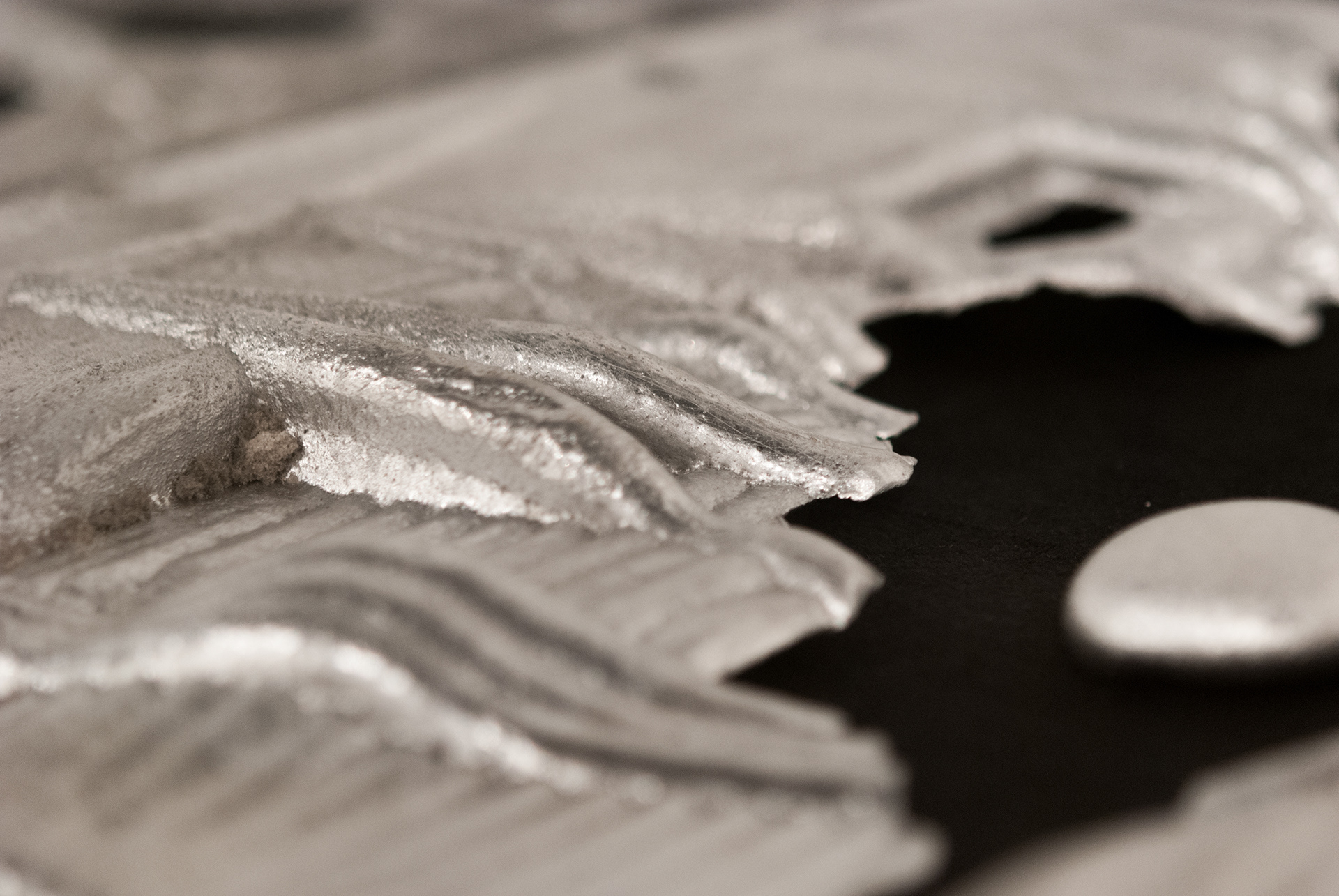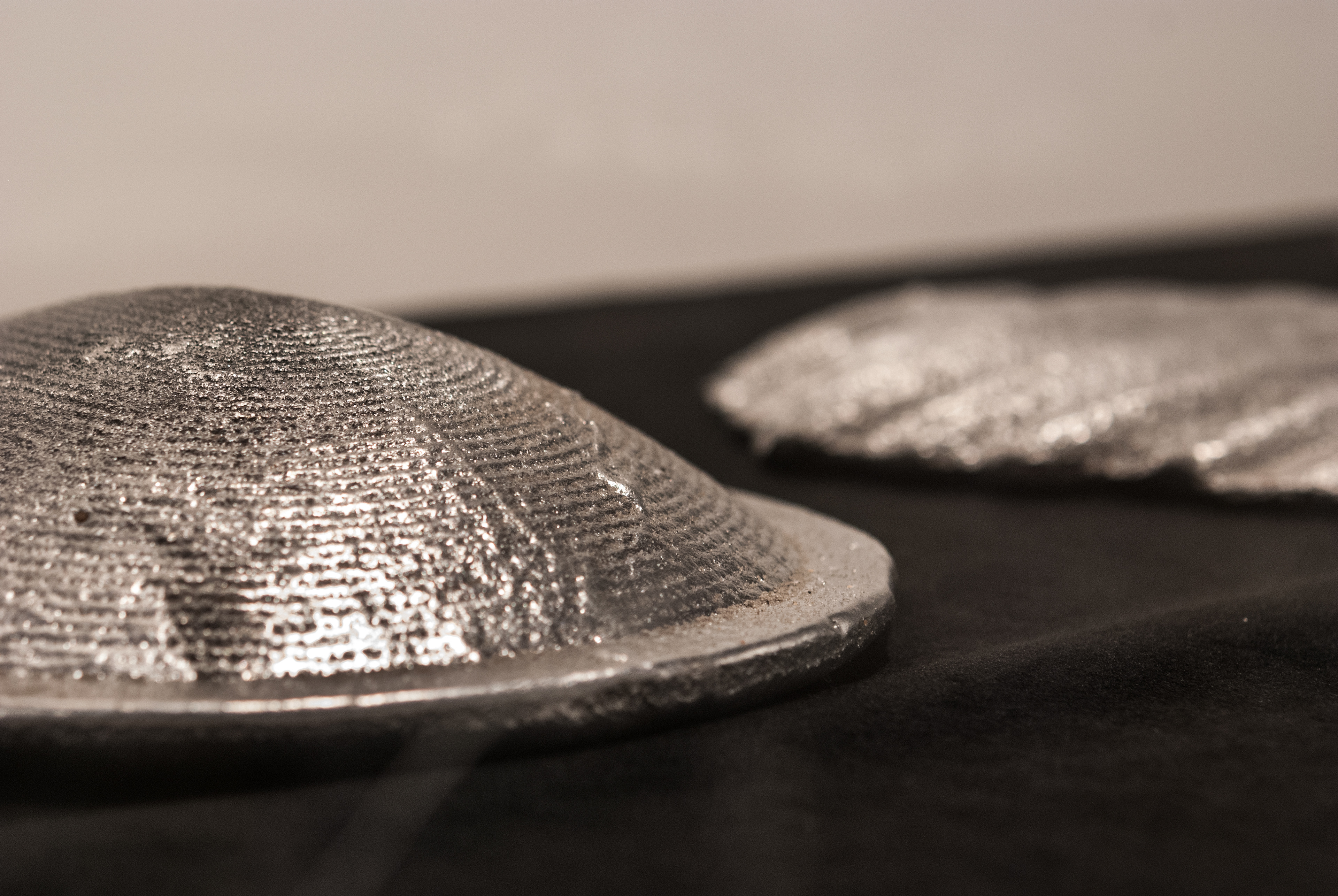High Tech, Low Tech was a winner of the 2014 Taubman College Architecture Student Research Grant. It was developed in the summer of 2014 and exhibited at the University of Michigan Architecture Gallery from November 19 to December 19, 2014. Team Members: Shan Sutherland, Paul McBride, Eric Harmon, and John Larmor.
Our research combines the millennium-old practice of sand-casting with the increasingly ubiquitous and intuitive expedient of multi-axis digital fabrication platforms. As sand-casting was further developed during the Industrial Revolution for the mass reproduction of a single part thousands of times, digital fabrication methods allow a possibility of mass customized parts independent from the previous requirement to produce solid positives. In this project, we explore how machining voids utilizes displacement of sand as a subtractive process that allows for the mass production of parts with variation and variability. Machine time is dissociated from specific objects and is instead vested within the operative process.






We demonstrate that a “low-tech” material/method combination can efficiently and economically yield a vast array of translations from the digital to the physical.
Our ‘planetary’ research into sand-bonding methods and machine tool combinations has resulted in casting a series of pseudo-neolithic objects digitally modeled, machined, and poured in aluminum; a creation of cultural archeological artifacts translated into a horizontally structured material assembly from extractions of the earth’s crust. The anachronistic objects in this exhibition illuminate a design/machining process that traces historical typologies of tools and figures of the earth. The objects are a manifestation of form-finding in cultural anthropological architectures, while structural applications are explored as technological objects that encounter the artifactual.


